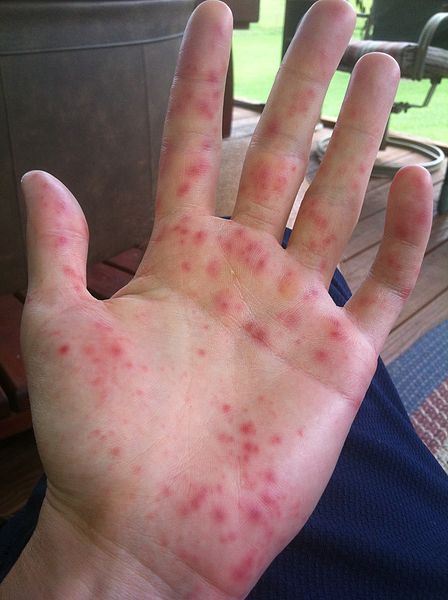Hand, foot, and mouth disease is a common viral infection that frequently affects infants and ren under the age of 5. The illness is caused by several types of enteroviruses.

Overview. Hand-foot-and-mouth disease is a common illness of infants and ren. In infants, it starts with fever, fussiness, and poor appetite.

Hand, foot and mouth disease (HFMD) is a common hood illness causing mouth sores and a skin rash. Read about the symptoms, treatment and how to prevent infection by this viral illness.
Hand, foot and mouth disease is a highly contagious virus that causes painful mouth sores, fever and rashes on the hands and feet.



Foot-and-mouth disease or hoof-and-mouth disease (Aphthae epiticae) is an infectious and sometimes fatal viral disease that affects cloven-hoofed s, including domestic and wild bovids.



Hand, foot, and mouth disease is a common hood illness caused by a virus, coxsackievirus A-16. The illness most often occurs in the spring and fall and is most frequently seen in ren, infants, and toddlers.
4 1. INTRODUCTION Hand foot and mouth disease (HFMD) is typically a benign and common illness among ren and infants characterized by rapidly ulcerating vesicles in the
Hand foot and mouth disease (coxsackie virus infection). Authoritative facts about the skin from DermNet New Zealand.
Hand, Foot, and Mouth Disease in an Adult A 36-year-old man presented to a dermatology clinic with tongue lesions and blisters on his palms and soles. Hand, foot, and mouth disease was diagnosed.

Hand-foot-and-mouth disease, or HFMD, is caused by a virus. Symptoms include ulcers, or sores, inside or around the mouth, and a rash or blisters on the hands, feet, legs, or buttocks. And while it’s not pleasant, it also isn’t serious. Anyone can get the disease, but ren 10 are most
